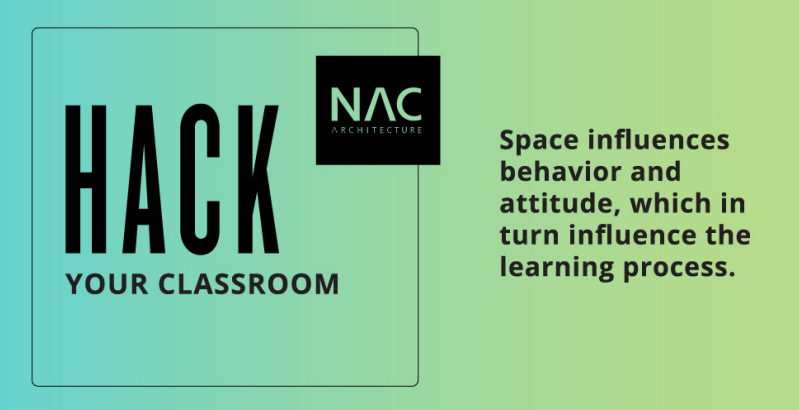At NAC Architecture, our designs are about more than just the building itself. We recognize that space influences behavior and attitude, which in turn impacts the learning process. Academic success is enhanced when an educational environment is thoughtfully designed to spark creativity and encourage innovation.
Equally important to designing inspiring learning environments is creating flexible spaces that can adapt to changing curriculum and a plurality of learning styles. In collaboration with Boston-based organization room2learn, NAC recently launched a campaign aimed at crowd-sourcing information on what teachers are doing in their classroom to improve the learning experience.
Our "Hack Your Classroom" campaign invites educators to share how they're adapting their classrooms to better achieve desired outcomes (e.g., personalized learning, student engagement, student-directed learning). Whatever you’re doing, we want to hear about it!
Additionally, we want to recognize and promote excellence in teaching and classroom design! That’s why one lucky hack submitter will be selected to receive $500 for new classroom supplies. The winner will be determined by a NAC + room2learn jury. Interested parties can submit their classroom hacks online here. Submission deadline is June 16, 2017.
Ready, set, HACK!






